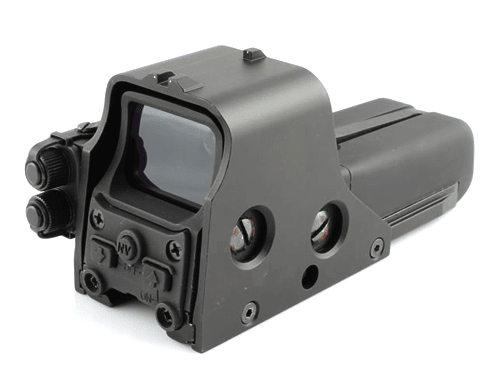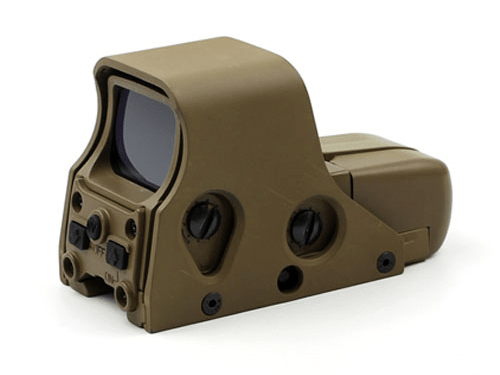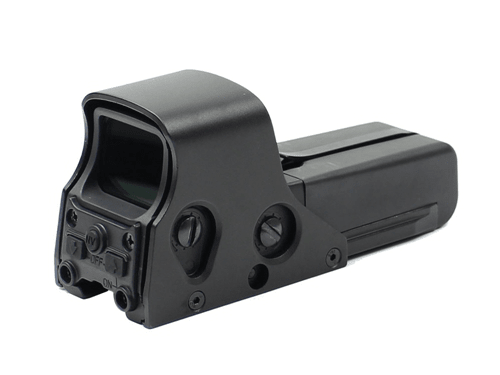Holographic weapon sights use a laser transmission hologram of a reticle image that is recorded in three-dimensional space onto holographic film at the time of manufacture. This image is part of the optical viewing window. The recorded hologram is illuminated by the collimated light of a laser diode built into the sight. The sight can be adjusted for range and windage by simply tilting or pivoting the holographic grating.
To compensate for any change in the laser wavelength due to temperature, the sight employs a holography grating that disperses the laser light by an equal amount but in the opposite direction as the hologram forming the aiming reticle. Like the reflector sight, the holographic sight is not "parallax free", having an aim-point that can move with eye position. This can be compensated for by having a holographic image that is set at a finite distance with parallax due to eye movement being size of the optical window at close range and diminishing to zero at the set distance (usually around a desired target range of 100 yards).



Since the reticle is a transmission hologram, illuminated by a laser shining through hologram presenting a reconstructed image, there is no needfor the sight "window" to be partially blocked by a semi-silvered or dielectric dichroic coating needed to reflect an image in standard reflex sights.
The optical window in a holographic weapon sight looks like a piece of clear glass with an illuminated reticle in the middle. The aiming reticle can be an infinitely small dot whose perceived size is given by the acuity of the eye. For someone with 20/20 vision, it is about 1 minute of arc.One drawback of a holographic sight is shorter battery life when compared to reflex sights that use LEDs, such as red dot sights. The laser diode in a holographic sight uses more power and has more complex driving electronics than a standard LED of an equivalent brightness, reducing the amount of time a holographic sight can run on a single set of batteries (around 100 hours for typical sights).

